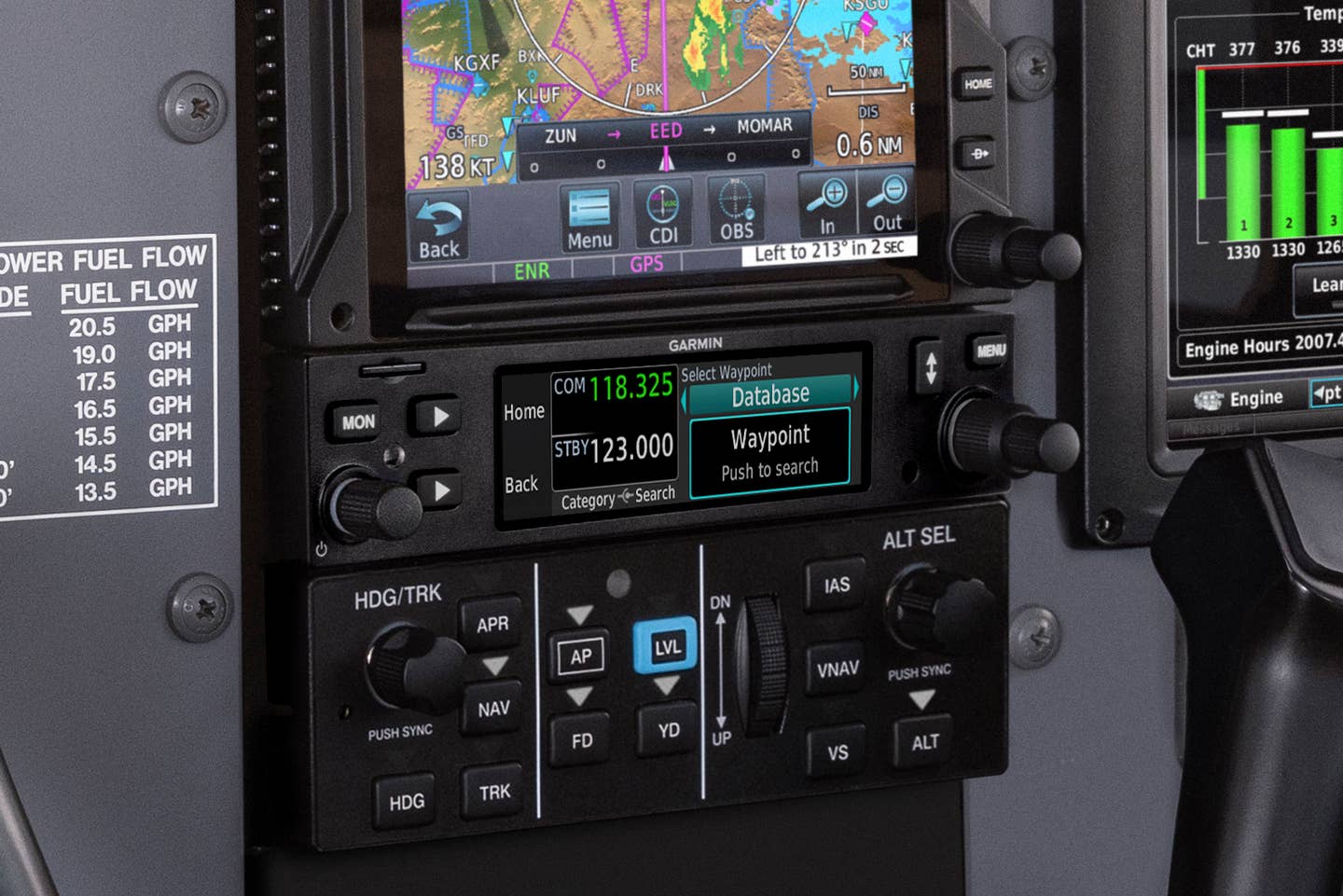 |
Pilots and the aviation community are recognizing the safety benefits of Angle Of Attack (AOA) indicators, which provide a visual display of the AOA, or the angle between the chord of the airfoil and the relative wind. An AOA indicator's ability to present an incipient stall visually, and a recent spate of accidents AOAs might have helped prevent, led the FAA last year to ease the pathway to certification for AOA products, and several manufacturers have since introduced theirs. Aspen Avionics previewed an AOA display for its Evolution primary flight and multifunction display screens during Sun 'n Fun this year. Not a moment too soon for James Buck, who formerly flew Beechcraft T-34Cs as a Marine Corp flight instructor. "In the military, AOA in the fixed-wing community is part of normal life," said Buck, now Aspen's director of flight operations. "I was shocked when I started flying as a civilian and no one in GA used it."
We met Buck at Plant City Airport, a few miles west of Lakeland, to see Aspen's AOA in operation in the company's Cirrus SR22. Buck explained some of AOA's features in the Plant City Airport Services offices before the flight. One benefit for Aspen's customers: No additional hardware or modifications are needed. The Evolution AOA indicator calculates angle of attack from the flight envelope data received from the air data computer and attitude heading reference system (AHRS) integrated in the Evolution 1000 PFD or Evolution 1000 MFD, and a certified GPS; users just update their software. Even more important, said Buck: Aspen's display shows AOA in both flaps up and flaps down configurations, as do military systems, whereas other units on the GA market show only one value, calculated for either flaps up, down, or somewhere intermediate. The values between clean and landing configurations can differ markedly, so the angle-of-attack indication can't always be accurate in such systems, Buck noted.
To install the AOA software, an Aspen dealer upgrades the Evolution with an SD card reader. Then, values for the aircraft's gross weight, empty weight, cruise speed, maneuvering speed and short-field approach speed are fed in on the ground. Finally, a calibration flight in smooth air is performed. After engaging the calibration mode, fly the aircraft straight and level at cruise speed for 45 seconds. Engage the calibration mode again and fly at maneuvering speed for 2.5 minutes. Engage a third time and fly the minimum approach speed for 45 seconds. "It literally takes less than ten minutes on a nice, smooth day," said Buck. If any errors occur, the system will provide an error message and the flight segment can be repeated.
The software in Aspen's Cirrus was upgraded, configured and ready to go, so we flew out to open airspace a few miles south. Aspen's Cirrus is outfitted with an Evolution 2500 multi-display system, consisting of an MFD500 on the left, a PFD1000 in the center, and on the right, an MFD1000 with a reversionary PFD mode. The AOA can be displayed on either one-half or one-third screen windows on the MFD, or as a smaller indicator superimposed on the PFD.
The AOA display appears as two parallel, vertical bars of blue, green, yellow and then red, from bottom to top. (Buck said Aspen is still finalizing the AOA's graphical presentation.) The bar on the left displays the flaps up AOA, flaps down is on the right. It's up to you as the pilot to know which one you should be paying attention to, based on the aircraft's configuration.
 Aspen Avionics previewed an AOA display for its Evolution primary flight and multifunction display screens during Sun 'n Fun this year. One benefit for Aspen's customers: No additional hardware or modifications are needed. |
We flew banks at 30, 45 and 60 degrees, watching the AOA indicators advance higher the steeper the angle. Simply seeing the differences in indications in the two configurations displayed simultaneously, while banking either clean or with flaps, was illuminating. Whenever we got near the red on the indicator for the appropriate configuration, the stall horn sounded. "If you calibrate the aircraft correctly, the stall warning horn and the red/yellow band are kind of coincident," Buck said.
The message was clear, if not loud: It's better to see the approaching stall, and lower the nose or reduce the bank, before the stall horn goes off and catches you by surprise.
The display is pilot selectable and can be turned off when not needed, for example in cruise flight. Additionally, the PFD's AOA display currently has an off and auto, rather than on, mode; in auto, the display disappears when airspeed exceeds 100 knots.
We did some circuits back at the airport where Buck showcased other benefits: If you're doing a go around, when is it safe to retract your flaps? Now you definitely know, because you can see the angle of attack for a clean configuration even when the flaps are down. And a finer point: managing lift isn't just about keeping the aircraft from stalling. If you're operating out of short fields, you don't want excess lift when you're coming over the numbers. An AOA will help you fly slow speeds more precisely as well as more safely. To maximize those benefits, I'd want on AOA indicator that displayed both ends of the configuration envelope.
The software for the Aspen's Integrated Angle of Attack Indicator is $1,995. Visit aspenavionics.com for more information.

Subscribe to Our Newsletter
Get the latest Plane & Pilot Magazine stories delivered directly to your inbox





